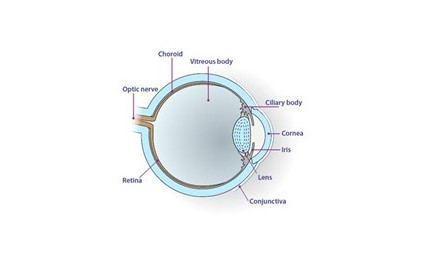
Understanding conditions affecting the eye can be difficult. We hope this labelled diagram will help describe different parts of the eye that can be affected by cancer.
- Cornea- this is the clear window at the front of the eye that enables us to see properly.
- Conjunctiva- this is “the skin” of the eye, which helps protect us from infections.
- Lens- this helps focus the light on the back of the eye.
- Iris- this is the coloured part of the eye which changes shape and controls the amount of light entering the eye
- Ciliary Body- This is responsible for producing fluid called “aqueous” inside the eye. It also helps change the shape of the lens so we can focus when reading.
- Vitreous- this is the “jelly” inside the eye.
- Choroid- this pigmented layer covers the whole of the back of the eye. It absorbs excess light entering the eye and helps stop symptoms of glare.
- Retina- this layer has the photoreceptors of the eye (like the film of a camera). It captures images from the outside world and sends them to the brain.
- Optic Nerve- This nerve connects the eye to the brain.
The choroid, cilary body, and the iris make up the uveal tract. This is where melanomas (cancer of the eye) can grow.
